Difference between revisions of "A Stranger's Tips: The Game Designer's Manifesto"
| Line 90: | Line 90: | ||
=== GENERAL OUTLINE PLOT SUGGESTIONS: === | === GENERAL OUTLINE PLOT SUGGESTIONS: === | ||
| − | + | ==== 1. Go small.==== | |
| − | '''2. If you don't want to go small, at least make me feel like it's worth it. | + | No exploring multiple worlds or even one vast world. Confine your character(s) to a country or a continent, a village, a city, a wasteland, whatever. Don't make them climb too many mountains and scour too many seas. Don't make them go through every dungeon in the world. Most of all, it doesn't have to be about them saving the world. It could be a simple story, something that spans ten locations, at most. Why have twelve characters you can play with? Why not three? Why not four? Not only is this less work for you, but you can concentrate more on building up on the personalities of your characters. |
| + | |||
| + | ====2. If you don't want to go small, at least make me feel like it's worth it.==== | ||
| + | |||
| + | The player does not wish to climb your Mt. Kiribaki or go through your Pisces Desert if he does not care about what is going on in your plot, if you choose to make it sprawling and epic. The key is to make your player care about what your characters are trying to achieve. And sub-plots or related short term goals throughout are placed throughout to maintain interest and build towards achieving that goal or solving that conflict. Even if it's searching for a MacGuffin (1). | ||
<html><img src='https://i.imgur.com/19PI7o7.jpg'></html> | <html><img src='https://i.imgur.com/19PI7o7.jpg'></html> | ||
| Line 105: | Line 109: | ||
''Whether it's revenge or to get back their kidnapped daddy or a cricket pie or a chance to see a loved someone or whatever, they have to crave it and your player has to be convinced to want it FOR them. The thing about a game is that the player is not watching the protagonist do everything. The player, in a way, IS the protagonist and your player must want to see your character get what he wants to get or not get what he wants to get. Your characters are the very life of your game and your plot is the device that forces the character towards choice and action.'' | ''Whether it's revenge or to get back their kidnapped daddy or a cricket pie or a chance to see a loved someone or whatever, they have to crave it and your player has to be convinced to want it FOR them. The thing about a game is that the player is not watching the protagonist do everything. The player, in a way, IS the protagonist and your player must want to see your character get what he wants to get or not get what he wants to get. Your characters are the very life of your game and your plot is the device that forces the character towards choice and action.'' | ||
<hr> | <hr> | ||
| + | |||
| + | ==== 3. Work on the chronology and pacing.==== | ||
| + | |||
| + | Stories don't always have to start at the very beginning. That is, stories don't always have to start where the character hasn't become a fighter or warrior yet and he lives in a small village picking herbs and shrubs waiting until it gets burned down (who hasn't been guilty of this? I have). No, it is in my opinion that a player gets better reeled into the story where they are suddenly tossed in the middle of a situation, a possible crisis. Or at least, make the introduction a playable one. I'm not saying nothing's wrong with a cinematic one with people walking around and screens panning over trees, but we're daring to be different here. And different, if done well, can make the player interested for more. The player likes to see what they haven't seen before in other games. | ||
| + | |||
| + | === QUESTIONS YOU CAN ASK YOURSELF: === | ||
| + | |||
| + | # How different can epics be from each other? Aren't their progressions and outcomes the same, more or less? | ||
| + | # Would I prefer to play a game without cliches? | ||
| + | # Which is easier to make for an amateur game maker: a sprawling epic or a simple story? | ||
| + | # Do you think a game with a daringly different storyline would interest you? | ||
| + | # Would you prefer to be reeled into the action at first, or attend boot camp (when you mostly know how to handle yourself already)? | ||
| + | |||
| + | == PART TWO: A LOOK AT PLOT AND CONFLICT == | ||
| + | |||
| + | I believe we've established that we are going to try to dare to do something different with our plot now. Suggestions were listed in previous pages, but you want to know exactly what kind of conflicts your plot can have if not saving the world and collecting the teardrops of the moon to defeat big Sun monster. | ||
| + | |||
| + | A writing teacher of mine has been given two metaphors that could explain what is preferred in a plot. The first is '''identifying the story as a piece of string''' and tying knots in that piece of string as it goes along. The writer to know where to tie the knots. These knots refer to crises (plural of crisis) in the story. Stories need crises. '''Stories need trouble. No player is interested in a game where there is no conflict, where there is no trouble and just happiness and everyone gets their jollies.''' | ||
| + | |||
| + | <html><img src='https://i.imgur.com/L9JmlDj.png' width='800'></html> | ||
| + | |||
| + | However, these knots have to be untied at the end of the game. Mind you, this is not a rule because in writing, there are no real rules. But this untying of knots is signified as the '''denouement''', when the crises are over, when the resolution occurs and all the results play off and we see what happens to our characters in the aftermath. Following the denouement is the conclusion, which is basically just the end result of the plot, as stated. | ||
| + | |||
| + | This makes your game so much more memorable in the end than a screen saying "YOU FINISHED THE GAME. CONGRATULATIONS! HEHE!" Be fair to your players. They've finished your stupid game, give them a proper ending, if you ever manage to finish your game. | ||
| + | |||
| + | <html><img src='https://i.imgur.com/C0ReNcf.jpg'></html> | ||
| + | |||
| + | The other metaphor my teacher likened writing to was, well, '''sexual intercourse'''. As you go along, you keep going more and more, not reaching that climax yet. You cannot climax at the beginning or the middle but you have to keep putting in more and more energy in there to make the climax better. Remember I said your game is Speed Racer's car and your story is your track? Keep your scenery interesting. A track can get very boring and you have to change that. | ||
| + | |||
| + | You have to entice your players with your plot, almost seduce them to want it badly but keep them satisfied with what they are getting currently. And then the climax comes! And you better hope the reader is pleased with it! And then you lie in bed and smoke a cigarette and this is the denouement - lying in bed and smoking a cigarette and possibly wanting to just cuddle or go to sleep or whatever. | ||
| + | |||
| + | '''So Much Conflict and I'm Not Sure How to Do It''' | ||
| + | |||
| + | '''Conflict''' comes in basically five categories and examples in brackets. | ||
| + | |||
| + | # '''Protagonist versus Antagonist''' (A man wants to do something bad to another or do something that will affect others in a bad way. [typical RPG storyline]) | ||
| + | # '''Protagonist versus Society''' (A man wants to go out and solve a problem that is affecting a village.) | ||
| + | # '''Protagonist versus Nature''' (A man has to survive in the jungle.) | ||
| + | # '''Protagonist versus God''' (A man has to come to terms with his own mortality, goes on a quest to do so... somehow.) | ||
| + | # '''Protagonist versus Himself''' (A man has killed another man and it's tearing him up inside. He must redeem himself somehow.) | ||
| + | |||
| + | <hr> | ||
| + | <html><img src='https://i1.wp.com/i.imgur.com/C9RlK.gif'></html> JUST A REMINDER [<html><img src='https://i1.wp.com/i.imgur.com/C9RlK.gif'></html> | ||
| + | |||
| + | ''Remember that conflict is the most important element of a plot. Without it, a plot isn't a plot. It's always important to keep conflict constant, one way or the other. It doesn't always have to be heavy or overbearing, but keeping it constant keeps the player interested in what is going on. I cannot stress this enough.'' | ||
| + | |||
| + | <hr> | ||
| + | |||
| + | === SUGGESTIONS ON CONFLICT: === | ||
| + | |||
| + | ==== 1. Don't just focus on external conflict. Characters have feelings too.==== | ||
| + | |||
| + | Internal conflicts can be very interesting if they are done well. Not only will this help, this will give your game the heart it needs. Your characters is the energy the player gets most involved with in a game. Don't be afraid to give your character feelings and personalities. Don't be afraid to have them row with each other. What group of people doesn't build tension among themselves? This could be a good tool in building even more conflict. But... | ||
| + | |||
| + | ==== 2. For goodness sake, don't overdo it.==== | ||
| + | |||
| + | Keep your conflict constant but as I said, don't drown the story with it. A deluge of conflict is not only awkward but overwhelms the player. Not always, but it's walking a fine line and I would not recommend it. I would also not recommend making your characters super-emotional, but I will write about that later. Keep your conflicts simple (not convoluted), keep them easy for the player to relate to. Don't make them ridiculous or long-winded. This makes it hard to relate to. You want to reel the player in, not push them away. | ||
| + | |||
| + | ==== 3. Always try to give your conflict something new, something to differentiate it from other conflicts in other games.==== | ||
| + | |||
| + | If story is the main thing in your game, you want it to be memorable, you want it to stand out. If you're going to do something about saving the world, do it in some innovative way that cannot be superimposed onto a typical lazy plot of beating seven mystical dragons to make your way to the top of the Evil Tower of the Overlord. I can't tell you how to do this. You have to use your own imagination for this one. You have to do some work. | ||
| + | |||
| + | ==== 4. Stick with one main conflict, if you can. ==== | ||
| + | |||
| + | From where your introduction begins and crisis begins, it should be one main crisis. From start to finish, yes. It can morph and shape itself into different forms but at its bare-boned structure, it should be the same main conflict, the same main goal. The only exception is if there is a sudden twist in the middle of the story and you have to go to a different allegiance, fight for a different cause, blah blah etc. etc. But otherwise, stick with one main conflict. You can always put sub-plots with different conflicts throughout the plot to accompany this one main conflict. But shifting from main conflict to main conflict to main conflict in a plot is tiring. | ||
| + | |||
| + | === Questions to Ask Yourself: === | ||
| + | |||
| + | # What would a plot be like without conflict? | ||
| + | # If I had an original conflict or did it in an innovative original way, would my game get better reception? | ||
| + | # And how would I go about doing this? | ||
| + | # Would it better for a game to have characters who have internal conflicts as their journey goes on? | ||
| + | # How much conflict should my game have? How much is too much? How much would tire me out as a player, not a game maker? | ||
| + | |||
| + | === SUPPLEMENTARY GOODIE: === | ||
| + | |||
| + | Here is a list from [https://en.wikipedia.org/wiki/The_Thirty-Six_Dramatic_Situations George Polti's 36 Dramatic Situations] and related character archetypes that could help you think up some conflicts. | ||
|} | |} | ||
Revision as of 13:56, 8 October 2019
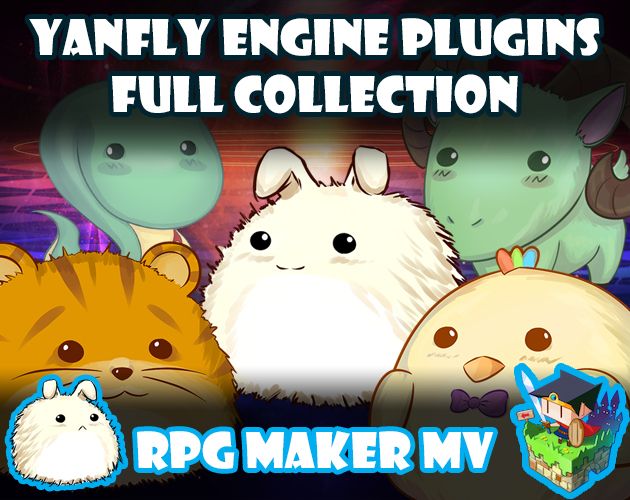
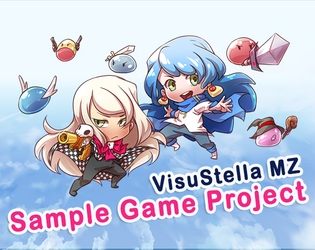
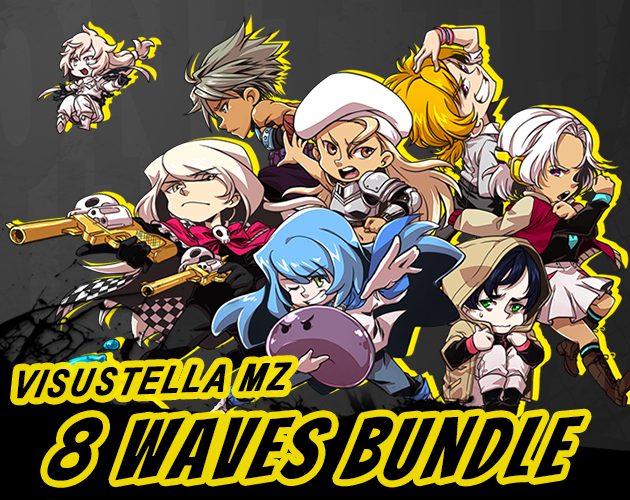
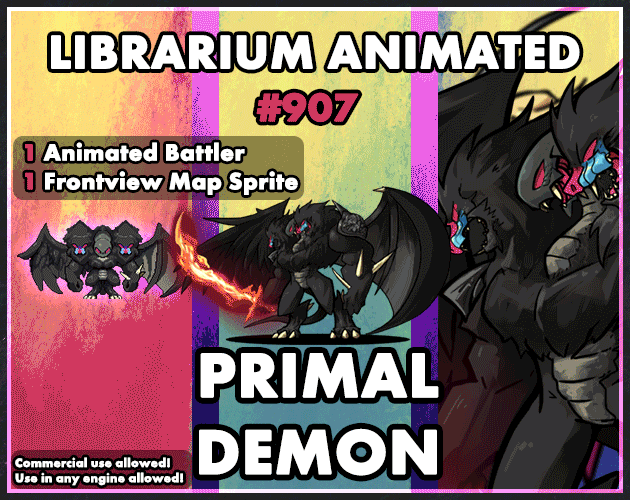
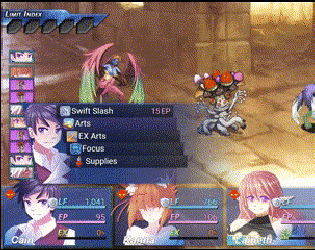
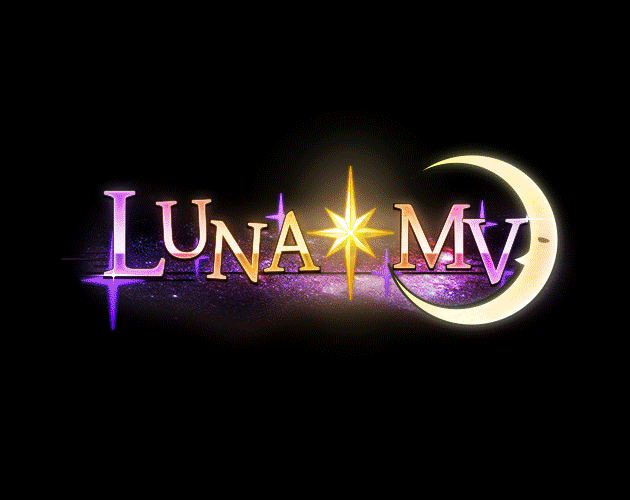
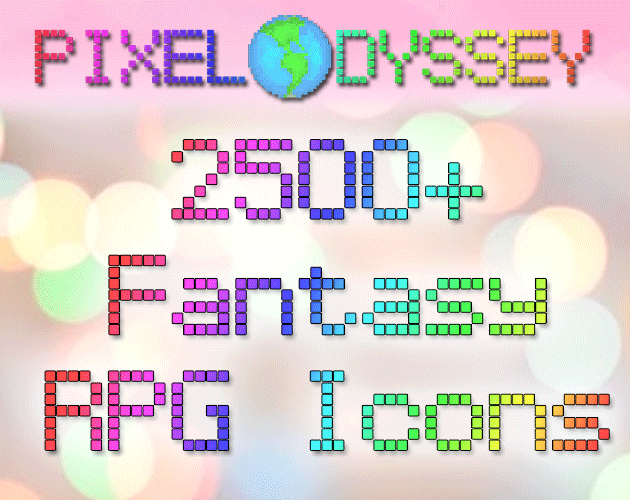

|
VisuStella, Caz Wolf, Fallen Angel Olivia, Atelier Irina, and other affiliated content creators.
|
This article has been transcribed from RPG Maker Web. AN INTRODUCTION / PRELUDEOr as many of you little game makers would say, here is the "prelude". This tiny tome of mine would probably more suit makers of RPG's or games with long storylines, though I will also try to write a little for those who want to write a simple, hour-long game or so. But I want to concentrate more on story-oriented games. It's no secret that some of you produce some very, very bad story scripts for your games. Story may not always be the element of a game people look most forward to, but I always like to think of it like a knot or a cog. If the knot is loose, if the cog is rusty, there is a great possibility the machinery isn't going to work as well as it can. And within that possibility, the chance lies that your machinery can fall apart. And we don't want that to happen. We want to make sure all the little cogs, all the springs, all the nuts, bolts, wires, are all in place and ready to go. That's why I'm writing this – to help you prepare yourself to do this. One last thing to keep in mind, I'm not an expert at game scripting. I've never produced anything I have been very proud of, with respect to writing a game's script (that has been turned into a game, anyway) but I do think I know some tricks, some hints, some tips that could at least help you improve a little, help you see your faults. This guide is split into parts and at the end of each part I will pose a number of questions that you can ask yourself, as well as supplementary material, mostly about literary writing, not game writing, that I thought would be great extra reading material. So here we go. Supplementary Material(Taken from Version 1 of this page) Note: This addresses theme in literary works, not games, but still very much applicable. This is just a little something you can read before you start preparing your story. The following excerpt addresses preparing yourself while writing: 1. Eliminate your ego.When we begin to write, we feel very connected to the work. Even if the story is not about our lives, we feel coupled to it — that it reflects on us. So if your friend reads a story you've written, and hands it back to you saying, "Well, it's all right," you might think, "My God! She thinks it stinks! She thinks I'm stupid! She doesn't like me!" Sometimes the simplest comments from readers can lead to hysteria on our part. Or else we might respond to comments with fury and defensiveness. Once an acquaintance asked me to critique a story of hers. I dutifully marked it up with my red pen and gave it back her, at which point this woman became incensed, her rage taking on Ghaddafi-esque proportions. She called my phone machine at home, shrieking, “But it really happened that way! My mother liked it so why didn't you? You only care about the market, not art! You only care about art, not the mar—” at which point the tape ran out. She never spoke to me again.
Why do people respond to comments about their work with either self-anger or anger at others? Ego. At the bottom of these destructive responses is the foolish belief that we must be perfect for people to like us. We imagine that we must make absolutely no mistakes, and if we do, we're unlikable. Instead of realizing that making mistakes is a necessary part of every learning process, we either attack ourselves ("I'm a failure! I’ll never be a writer! I have no reason to live!"), or we kill the messenger ("He just doesn’t know what it's like to work for days on a story! He has no respect for my self-esteem! He’s just a narrow-minded, ignorant snob!"). It's as if we imagine that readers are reading our personalities rather than our stories. However, if we realize that ego is merely an internal impediment, one that we can learn to step around or even eliminate, we will be less likely to punctuate our apprenticeship with periods of cessation and despair. The main way I do this is by remembering how I feel when I read published work: I simply want the story or article to captivate me from beginning to end, and if it fails to do so, I’m disappointed. By keeping this in mind, I’m far more able to focus on the piece itself and do what needs to be done to it, without thinking about my own needs and feelings. It is a matter of learning to separate myself from the work, view it as a reader, and then act more as caretaker. Some published writers refer to this separation process as learning to be professional. But you need not apply that term. All you need do is recognize that there is a transitional period in the life of every creative piece where the writer, having birthed the work, needs to accept that the work is a distinct entity, and that henceforth the writer needs to be more like a parent, ensuring in all ways possible that it is well-prepared before it goes into the world. The next item is an additional tool you can use to assist you with this transition. 2. Acquire patience.Or, develop a tolerance for time. Aside from egolessness, patience is a writer's best ally, because it gives the freedom to revise. As much as you might wish to see your name in print, you'll feel much better if your name is attached to a tightly-written, well-constructed story than to a muddy first draft. Plus, few teachers, and virtually no editors, want to work with writers who resist revision. Writers need to learn when their resistance to suggestion is mere ego, and when it's based on carefully worked out aesthetic decisions.
Evolution is not instantaneous. To be a writer is to be constantly evolving. If anything "should" happen fast, it is not getting the writing done, but accepting that writing takes time. The final item here, when combined with egolessness and patience, can give you faith that you can produce truly original work. 3. Listen to your inner voice.Your inner voice is your internal aesthetic guide which can direct you toward work that is both great and unique. When we first begin to write, and sometimes even later in our writing careers, we might wonder how to tell when a piece is done, or even how to get a sense of whether anything in it is good. We might realize we would be wise to develop what Hemingway called the "built-in, shock-proof sheep detector," but we aren't sure how. Insecurity might even ricochet inside us; it seems impossible to imagine how we will ever just know. This is because we have not yet learned that every writer has an inner voice which does our sheep detecting and delivers our declarations of completion — as well as leads each of us away from sounding like anyone else, and ferries us to our unique vision. So how can you learn to hear your inner voice?
I am forever watching people train themselves to gag their inner voices. They prepare a story for their writing class, or group, or a friend. Before turning it over to others, I ask, "How do you feel about it?" They say, "Well, I'm not sure about the ending. I'm going to show it to the class/my friend/etc. and see what they think." Which, in practice, means that if others find the ending good enough, the writer trains himself to disregard his inner voice. So he never pushes the piece to a new height, never finds a vision beyond the one that others already see. The same problem can arise if others think the ending needs work and offer a specific solution; instead of working harder on her unique approach, the writer reorients the piece as others want, mulching the very traits she could otherwise let blossom into a singular vision. Push to go beyond. Inner voices speak up every step of the way in writing, but they tend to speak all the more clearly when a work has undergone thorough rewriting, with the writer considering all the ways to make the piece even more successful, as well as more distinct. I urge you to end every writing session with a stint in your journal so that you can give your inner voice a place in which to express its concerns. That way it's all recorded, and you'll be able to knock off for the day with the knowledge that you've given your inner voice the respectful airing it deserves — and with the assurance that you will have those thoughts in ready-to-use form the next time you sit down to write. PART ONE: GENERAL PLOT OUTLINEI believe you know what cliché means. I'm here to say cliché isn't always bad and it doesn't always never work. It does. Cliches can help familiarize a player with a setting or a scenario or a character. It does the work you don't have to do. Epic plotline of saving the world and collecting crystals to do so? Who can resist? It's been done so much before, successfully, that it can only strike as appealing that if it's done again, you can recreate the same feeling that goes along with it. And that would be fine, if everyone didn't use the same, identical skeletal structure of a plot for their own games. What we end up with is 100 games being released, all with the same introduction, main conflict, denouement and resolution. And you end making a "dime a dozen" game. You don't want that. You want your game to stand out, shine, rise above the rest. If your premise is identical to dozens of other games, it won't do that, no matter how good your graphics may be. The only thing that can save you at this moment is very varied gameplay, and if you don't have that, you should go back to the drawing board. Or you can release a mediocre forgettable game that people are going to confuse with another. So what you need is an interesting premise. Something different from spiky-haired heroes and villains standing in the rain, their white hair blowing in the breeze. Something more than a ten-hour long fetch quest for crystals, medallions and magical coins.
Please... You can come up with something better! It's been done a thousand times. The progression is the same. The plot is usually the same except that names, events and locations have been changed. It's the same progression and amounts to the same outcome. Every epic RPG is simply an altered version of the other. Most of the time, they are neither imaginative nor particularly interesting. I can understand why people follow it - it's successful in the commercial area, it allows for some hardcore action and grand schemes, it makes us nostalgic. But it comes off lazy to me to use such a cookie-cutter plot and not something innovative or original. To have an adventure span an entire world, I feel, doesn't allow much room for character development unless the focus remains on the key characters and not 12 protagonists banded together to take care of this antagonist. Of course, there are anomalies, mostly found in commercial games, but most characters come off with stereotyped personalities, rehashed personalities or devoid of personality. Worst of all, these games are tedious to work on and almost always never end up completed. I know some of you started your RPG's when you were young and have had your story boiling in your brains for a really long time, but do you think you would create something different if you decided to start something completely new RIGHT NOW? Or would you just want to finish your game because you've been working on it for so long? The downfall of most of us is the ambition we have when starting off a project, especially when we are young and what is driving us most is to imitate the styles of the commercial games we liked when we were young. There's just so much you can do aside from the great Magi War or the Legendary Seven Crystals or the Evil Overlord in the Dark Tower. Basically, just think of your game as a Speed Racer's car. The player is the driver. He can do X and Y and Z abilities. But if he gets a horrible track to drive on, it's not going to be much using X and Y and Z abilities. It's also not going to matter how shiny the car is. It's also not going to matter how much the car costed or took to build. If that baby doesn't have a right track to drive on, it's just going to be no fun. And the player is going to want to know why you built such a good car, and gave him such a stupid track to drive on.
Hopefully, you dig it. GENERAL OUTLINE PLOT SUGGESTIONS:1. Go small.No exploring multiple worlds or even one vast world. Confine your character(s) to a country or a continent, a village, a city, a wasteland, whatever. Don't make them climb too many mountains and scour too many seas. Don't make them go through every dungeon in the world. Most of all, it doesn't have to be about them saving the world. It could be a simple story, something that spans ten locations, at most. Why have twelve characters you can play with? Why not three? Why not four? Not only is this less work for you, but you can concentrate more on building up on the personalities of your characters. 2. If you don't want to go small, at least make me feel like it's worth it.The player does not wish to climb your Mt. Kiribaki or go through your Pisces Desert if he does not care about what is going on in your plot, if you choose to make it sprawling and epic. The key is to make your player care about what your characters are trying to achieve. And sub-plots or related short term goals throughout are placed throughout to maintain interest and build towards achieving that goal or solving that conflict. Even if it's searching for a MacGuffin (1).
1. Macguffin - A MacGuffin (sometimes McGuffin) is a plot device that motivates the characters or advances the story, but the details of which are of little or no importance otherwise.
Your main characters all have to WANT something. Whether it's revenge or to get back their kidnapped daddy or a cricket pie or a chance to see a loved someone or whatever, they have to crave it and your player has to be convinced to want it FOR them. The thing about a game is that the player is not watching the protagonist do everything. The player, in a way, IS the protagonist and your player must want to see your character get what he wants to get or not get what he wants to get. Your characters are the very life of your game and your plot is the device that forces the character towards choice and action. 3. Work on the chronology and pacing.Stories don't always have to start at the very beginning. That is, stories don't always have to start where the character hasn't become a fighter or warrior yet and he lives in a small village picking herbs and shrubs waiting until it gets burned down (who hasn't been guilty of this? I have). No, it is in my opinion that a player gets better reeled into the story where they are suddenly tossed in the middle of a situation, a possible crisis. Or at least, make the introduction a playable one. I'm not saying nothing's wrong with a cinematic one with people walking around and screens panning over trees, but we're daring to be different here. And different, if done well, can make the player interested for more. The player likes to see what they haven't seen before in other games. QUESTIONS YOU CAN ASK YOURSELF:
PART TWO: A LOOK AT PLOT AND CONFLICTI believe we've established that we are going to try to dare to do something different with our plot now. Suggestions were listed in previous pages, but you want to know exactly what kind of conflicts your plot can have if not saving the world and collecting the teardrops of the moon to defeat big Sun monster. A writing teacher of mine has been given two metaphors that could explain what is preferred in a plot. The first is identifying the story as a piece of string and tying knots in that piece of string as it goes along. The writer to know where to tie the knots. These knots refer to crises (plural of crisis) in the story. Stories need crises. Stories need trouble. No player is interested in a game where there is no conflict, where there is no trouble and just happiness and everyone gets their jollies.
However, these knots have to be untied at the end of the game. Mind you, this is not a rule because in writing, there are no real rules. But this untying of knots is signified as the denouement, when the crises are over, when the resolution occurs and all the results play off and we see what happens to our characters in the aftermath. Following the denouement is the conclusion, which is basically just the end result of the plot, as stated. This makes your game so much more memorable in the end than a screen saying "YOU FINISHED THE GAME. CONGRATULATIONS! HEHE!" Be fair to your players. They've finished your stupid game, give them a proper ending, if you ever manage to finish your game.
The other metaphor my teacher likened writing to was, well, sexual intercourse. As you go along, you keep going more and more, not reaching that climax yet. You cannot climax at the beginning or the middle but you have to keep putting in more and more energy in there to make the climax better. Remember I said your game is Speed Racer's car and your story is your track? Keep your scenery interesting. A track can get very boring and you have to change that. You have to entice your players with your plot, almost seduce them to want it badly but keep them satisfied with what they are getting currently. And then the climax comes! And you better hope the reader is pleased with it! And then you lie in bed and smoke a cigarette and this is the denouement - lying in bed and smoking a cigarette and possibly wanting to just cuddle or go to sleep or whatever. So Much Conflict and I'm Not Sure How to Do It Conflict comes in basically five categories and examples in brackets.
Remember that conflict is the most important element of a plot. Without it, a plot isn't a plot. It's always important to keep conflict constant, one way or the other. It doesn't always have to be heavy or overbearing, but keeping it constant keeps the player interested in what is going on. I cannot stress this enough. SUGGESTIONS ON CONFLICT:1. Don't just focus on external conflict. Characters have feelings too.Internal conflicts can be very interesting if they are done well. Not only will this help, this will give your game the heart it needs. Your characters is the energy the player gets most involved with in a game. Don't be afraid to give your character feelings and personalities. Don't be afraid to have them row with each other. What group of people doesn't build tension among themselves? This could be a good tool in building even more conflict. But... 2. For goodness sake, don't overdo it.Keep your conflict constant but as I said, don't drown the story with it. A deluge of conflict is not only awkward but overwhelms the player. Not always, but it's walking a fine line and I would not recommend it. I would also not recommend making your characters super-emotional, but I will write about that later. Keep your conflicts simple (not convoluted), keep them easy for the player to relate to. Don't make them ridiculous or long-winded. This makes it hard to relate to. You want to reel the player in, not push them away. 3. Always try to give your conflict something new, something to differentiate it from other conflicts in other games.If story is the main thing in your game, you want it to be memorable, you want it to stand out. If you're going to do something about saving the world, do it in some innovative way that cannot be superimposed onto a typical lazy plot of beating seven mystical dragons to make your way to the top of the Evil Tower of the Overlord. I can't tell you how to do this. You have to use your own imagination for this one. You have to do some work. 4. Stick with one main conflict, if you can.From where your introduction begins and crisis begins, it should be one main crisis. From start to finish, yes. It can morph and shape itself into different forms but at its bare-boned structure, it should be the same main conflict, the same main goal. The only exception is if there is a sudden twist in the middle of the story and you have to go to a different allegiance, fight for a different cause, blah blah etc. etc. But otherwise, stick with one main conflict. You can always put sub-plots with different conflicts throughout the plot to accompany this one main conflict. But shifting from main conflict to main conflict to main conflict in a plot is tiring. Questions to Ask Yourself:
SUPPLEMENTARY GOODIE:Here is a list from George Polti's 36 Dramatic Situations and related character archetypes that could help you think up some conflicts. |






 IMPORTANT
IMPORTANT 
